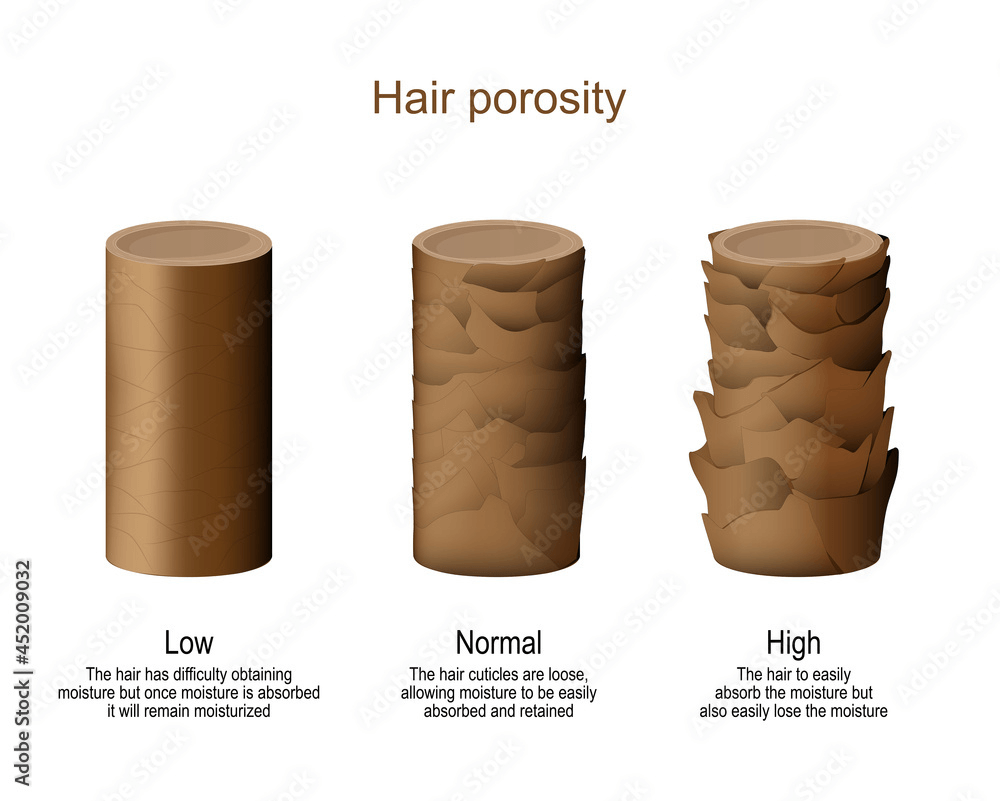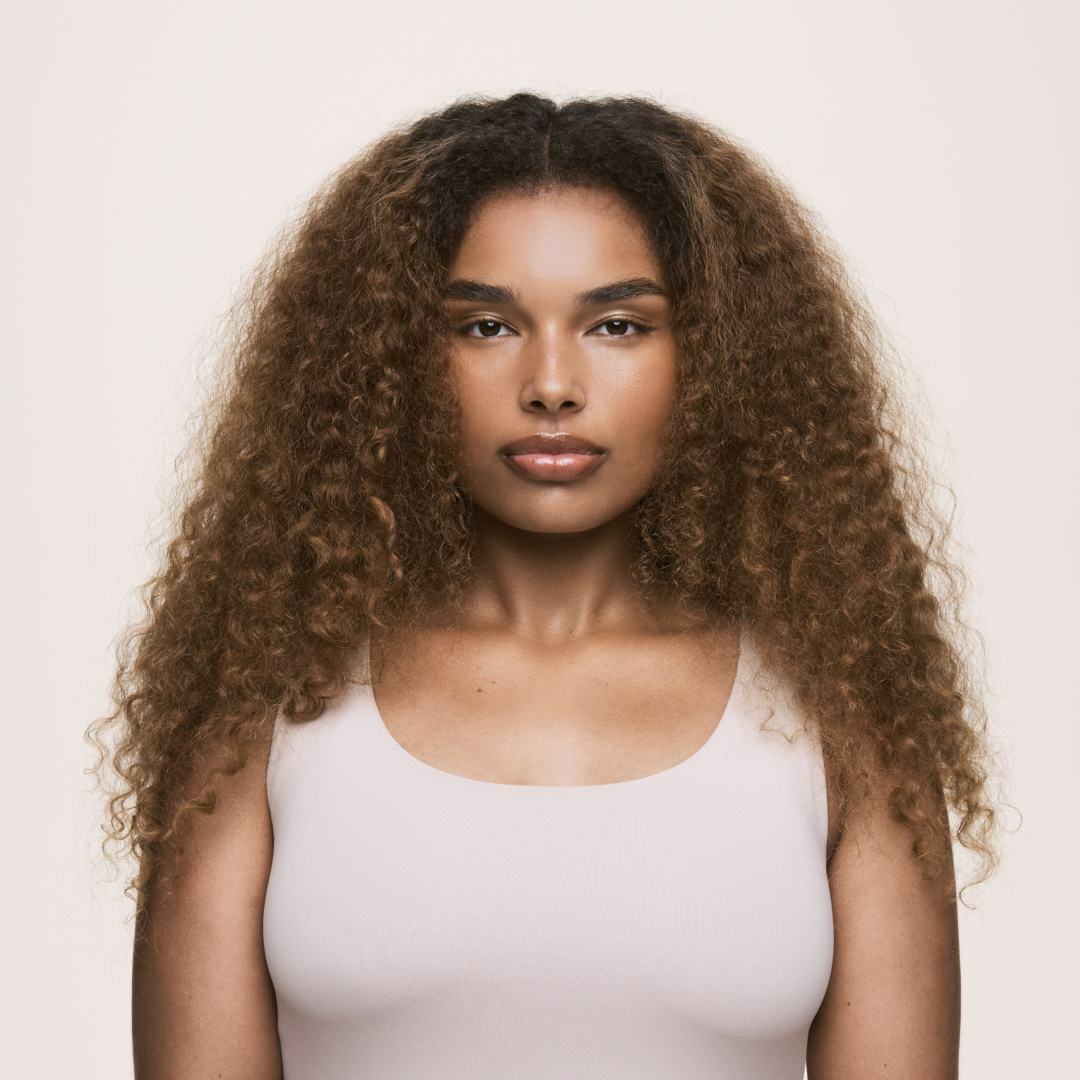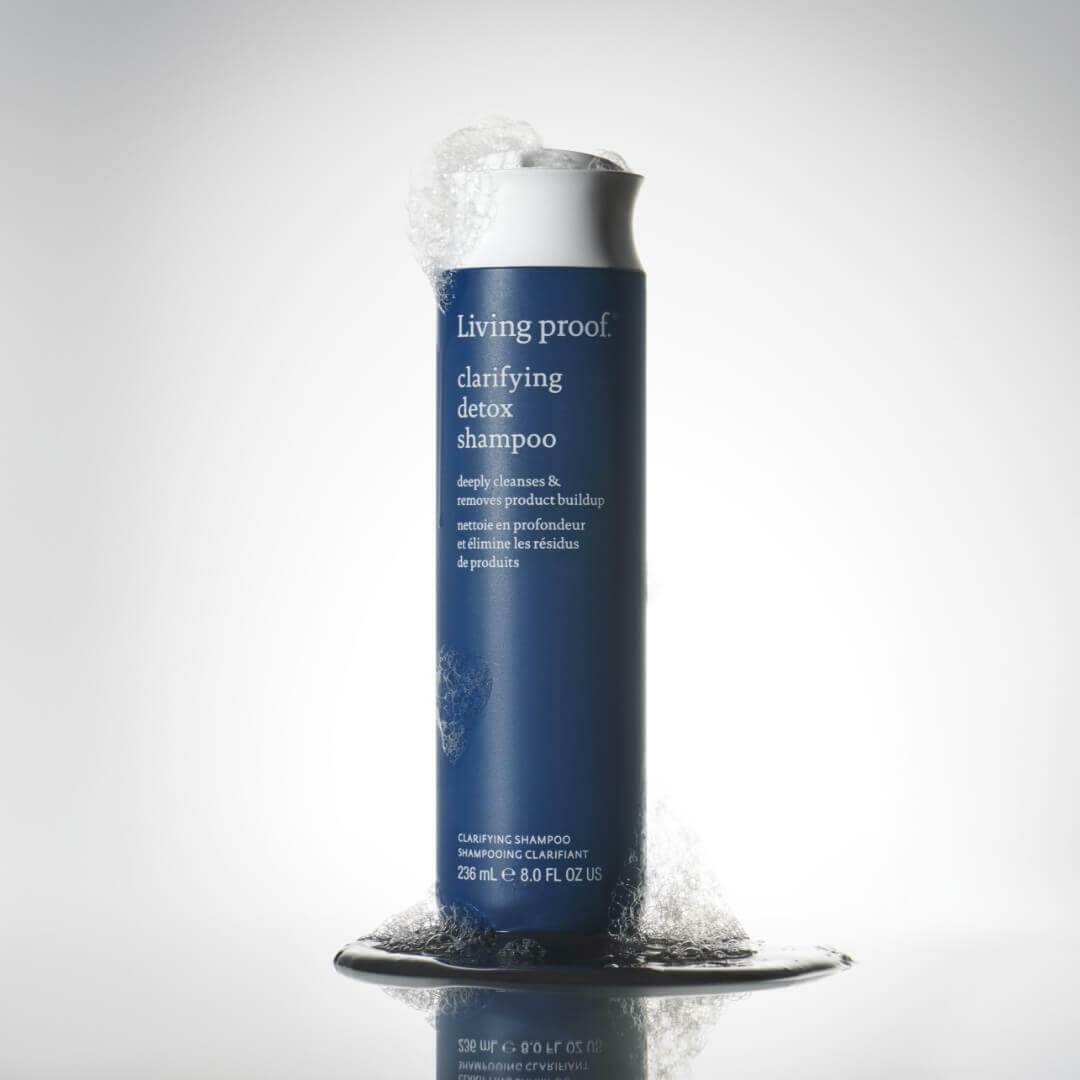
How to moisturize your hair: 12 tips for healthy hydration
Dry, damaged hair can put a damper on anyone’s day, but if you suffer from dry hair, know that you’re not alone: According to one global study, 70% of people report having damaged hair, with excessive dryness being one of the main culprits. Whether you’re dealing with brittle strands, a dull appearance, or unwanted frizz, this article will look into the leading causes of dry hair and show you how to effectively moisturize your hair to keep it healthy and hydrated.
The science of dry hair
Every strand of hair on your head is an intricate structure that consists of two main components: keratin, a form of fibrous protein, and lipids, a group of oily, fatty, or waxy chemical compounds insoluble in water. While keratin provides structural integrity and strength to the cuticle — the outermost layer of hair — lipids form a natural barrier on the surface of the cuticle, helping to seal moisture inside the hair shaft.
Without adequate hydration, the natural oils that comprise the lipid layer — also known as the F-layer — of hair can deplete or become unevenly distributed, leaving the cuticle exposed. This exposure can result in the keratin becoming dry and brittle, which, in turn, can cause the overlapping cells or “shingles” that make up the cuticle layer to lift and separate, further disrupting the F-layer and allowing essential moisture to escape from the inner cortex. If left untreated over time, this can lead to loss of tensile strength and elasticity and leave hair prone to damage and breakage.
To prevent further damage, it’s essential to recognize the leading causes of dry hair and learn how to keep your hair moisturized.
What causes dry hair?
Though there are any number of factors that can contribute to dry and brittle hair, they all fall into one of two categories: scalp-related issues and hair shaft-related issues.
On the scalp side, sebum — a complex mixture of lipids produced by the sebaceous glands — acts as a natural lubricant, creating a barrier against environmental factors and preventing both the scalp itself and individual strands of hair from drying out. Scalp conditions such as seborrheic dermatitis and scalp psoriasis, stress, overwashing, and even certain haircare products formulated with harsh ingredients can cause the scalp to dry out, disrupting hair’s F-layer and leaving the cuticle vulnerable to damage.
Even if your scalp is healthy and hydrated, you may still be at risk of dry, damaged hair. Excessive heat-styling, overprocessing, product buildup, hard water, and exposure to the elements — including sun, wind, chlorine, saltwater, and pollutants — can all take a serious toll on the hair’s cuticle layer.

There’s also the possibility that you have high or low porosity hair. Porosity refers to your hair’s ability to absorb and retain moisture based on its cuticle structure. The more densely packed the shingles that comprise the cuticle layer are, the lower your porosity, making it difficult for water and moisturizing products to penetrate the hair shaft into the inner cortex and medulla. Conversely, the more spaced the shingles are, the higher your porosity. Although high porosity hair is more permeable than low porosity hair, it also has a harder time retaining moisture. In both cases, those with either high or low porosity hair could be prone to dryness and damage.
7 signs you might have dry hair
Dry hair can manifest in various ways, impacting its appearance, texture, and overall manageability, which highlights the importance of knowing how to moisturize dry hair effectively. Here are some common signs to watch out for:
- Rough texture: Without sufficient moisture to maintain its natural lipid barrier, the overlapping shingles that comprise the cuticle layer of your hair can lift and separate, causing it to feel straw-like in texture and contributing to the appearance of frizz.
- Tangling: The rough texture of dry, damaged hair can create friction and cause individual strands to snag on one another, leading to tangles and knots.
- Breakage: Dry hair is often brittle and, therefore, susceptible to breakage. Breakage can take a few different forms, from a clean break midway through the shaft to split ends, where the hair strand splits into two or more fragments.
- Loss of elasticity: Elasticity refers to a strand of hair’s ability to stretch and return to its original shape without breaking. The more dry and brittle hair becomes, the more fragile each strand, leaving it prone to breakage when styled or manipulated.
- Dull appearance: Both the lack of natural oils and the uneven, fragmented texture of lifted cuticles can prevent light reflection, causing hair to lose its luster and shine.
- Stiffness: The lack of elasticity and roughened texture of dry hair can make it less pliant, creating a stiff, inflexible feeling.
- Itchy scalp: Given that scalp-related issues are a leading cause of dry hair, you may find that, in addition to your hair feeling rough and brittle, you also experience itchiness and flakiness throughout your scalp.
12 best ways to hydrate dry hair [by hair type]
If you want to add moisture to dry hair, try following these best practices:
- Switch to a moisturizing shampoo and conditioner. Look for products formulated with hydrating ingredients, such as emollients and occlusives, which can help restore the hair’s protective barrier, enhance its natural shine and softness, and make it more manageable when styling.
- Avoid products formulated with harsh chemicals. Though ingredients such as sulfates, parabens, and formaldehydes are commonly found in haircare products — used as either detergents or to extend the shelf life of products — they can strip hair of its natural oils, leading to breakage and brittleness.
- Rinse your hair with cold water. Giving your hair a cold water rinse after conditioning can help seal the hair cuticle, preventing moisture loss and adding natural shine. In addition to trapping moisture, rinsing your hair with cold water can also reduce frizz, making hair appear smoother and healthier.
- Layer products the right way. Applying hydrating products in the correct order can enhance their effectiveness without weighing hair down. Be sure to start with a leave-in conditioner to provide a base layer of moisture, followed by serums and oils to seal in hydration.
- Add in extra moisture with a hair mask. A hair mask is a deep conditioning treatment with nourishing ingredients that penetrate the hair shaft, effectively adding moisture to dry hair. It’s important to avoid using hair masks too often, though, as this can lead to product buildup and further dry out hair; those with fine or oily hair should limit their usage to once per week, while those with dry or damaged hair can apply a mask two to three times a week.
- Apply a heat protectant before using thermal tools. Heat styling can cause significant damage to the hair shaft, lifting the cuticle layer and exposing the core of the strand. While air drying can be a good alternative to using hot tools, it isn’t always an option, especially when time is of the essence. Using a heat protectant spray can add a protective barrier to your hair, reducing the impact of heat and preventing moisture from escaping.
- Experiment with hairstyles that don’t require heat. Heat-free styles such as braids, twists, or foam rollers can help you achieve your desired look without exposing your hair to thermal tools and high temperatures.
- Protect your hair from environmental elements with a UV protectant spray. Just as UV rays can cause damage to your skin, they can also harm your hair, causing dryness and color fading. Similar to how heat protectant sprays prevent thermal damage when using heat styling tools, UV protectant sprays shield your hair from the sun’s harmful effects, preserving moisture.
- Make dry shampoo part of your routine. Excessive washing can strip hair of its natural oils, leading to dryness. Adding a dry shampoo to your regular lineup of haircare products can help absorb excess oil and refresh your hair without the need for water, enabling you to extend the time between washes.
- Strengthen your hair with a bond builder. A lack of moisture can reduce the tensile strength of hair, leaving strands brittle and prone to breakage. Though not a moisturizing treatment, a bond builder can help repair the chemical bonds that hold together the keratin proteins in the hair shaft, strengthening its overall structure and ability to retain moisture and resist damage.
- Use ammonia-free hair dyes. Many hair dyes use ammonia to open up the hair cuticle and allow dye molecules to penetrate the hair shaft. While effective, ammonia can also be harsh and damaging to hair, especially with repeated use. If you currently dye or plan to dye your hair, consider using an ammonia-free formula with gentler alkaline agents to mitigate damage.
- Make a standing appointment with your stylist. Scheduling regular trims to remove split ends can help prevent them from traveling up the shaft, causing further damage. By removing the sections of hair that are most prone to breakage, you can encourage new growth of stronger, healthier hair.
How to moisturize hair [by hair type]
Different hair types are affected by a lack of moisture in different ways. In addition to following the best practices shown above, here are some ways to add an extra dose of moisture for your particular hair type and texture.
Curly hair
Curly hair is naturally drier than other hair types due to its unique structure, which makes it harder for natural oils to travel down the hair shaft. Co-washing — the practice of using a cleansing conditioner instead of a shampoo — can help those with curls maintain moisture, while doing a weekly hair mask can add much-needed hydration. Try the LOC method of applying products — leave-in conditioner first, then any hair oils, followed by a hydrating cream — to maximize moisture retention and, when drying your hair, use a diffuser to evenly distribute heat and reduce heat exposure.
Wavy hair
Those with wavy hair can follow many of the same tips as those with curly hair but should avoid heavy styling products that will weigh their waves down. Look for lightweight, hydrating products such as creams and oils that minimize frizz while enhancing natural texture.
Straight hair
Though straight hair is generally less prone to dehydration than other hair types, it can still benefit from lightweight moisturizing products such as leave-in conditioners and serums to prevent dryness, especially at the ends. To further prevent dryness and damage, try using heatless styles such as braids or heatless rollers to achieve a wavy look with minimal effort, and use a wide-tooth comb on wet hair to prevent breakage and retain moisture.
Thick, coarse hair
Due to its natural texture, thick, coarse hair requires heavier styling products that can effectively penetrate the hair shaft. Those with this hair type should regularly apply deep conditioning treatments and invest in smoothing products, such as creams and oils, that they can apply whether hair is wet or dry.
Thin, fine hair
Thin or fine hair can easily be weighed down by most moisturizing products, so it’s better to use a hydrating shampoo and lightweight conditioner, as these will avoid stripping hair of its natural oils without adding unnecessary weight.
Restore moisture to your hair with Living Proof
No matter your hair type or texture, Living Proof has the moisturizing products you need to restore and revitalize dry, damaged hair. All of our products, from our sulfate-, silicone-, and paraben-free shampoos and conditioners to our hair masks and hydrating treatments, are scientifically formulated to leave hair feeling soft and healthy, with nourishing ingredients such as hemisqualane, murumuru butter, and a biomimetic emollient blend. We’ve even developed our own proprietary smoothing technology that offers lightweight hydration, creating a protective barrier that locks moisture in while keeping humidity out to prevent frizz.
Take your first step toward moisturized hair — our quick and easy haircare quiz will help you identify the right Living Proof products to keep your hair healthy and hydrated.
Frequently asked questions
Why is my hair dry?
There are numerous factors that can contribute to dry, damaged hair, from frequent heat styling to chemical treatments to overwashing. Dry hair occurs when the natural oils that make up the lipid layer, or the F-layer, of hair are disrupted or stripped away, leaving the cuticle below vulnerable to damage. This can cause the overlapping cells that comprise the cuticle to lift, preventing the cuticle from retaining moisture and leaving hair feeling dry and rough.
How can I tell if it needs moisturizing?
All hair types and textures can benefit from moisturizing products, but your hair may need additional attention if it appears dull, feels rough and brittle, breaks or tangles easily, and is prone to frizz or split ends.
How often should I moisturize my hair?
While it's always a good idea to use a moisturizing shampoo and conditioner, whether you incorporate additional hydrating products into your routine — and how often you use them — will depend entirely on the texture and condition of your hair. Those with very dry, thick, or curly hair benefit from heavier hydrating treatments and more frequent application, such as everyday or every other day, whereas fine, straight, or oily hair types may only need to use moisturizing products once or twice per week.
- MDPI, “Known and Unknown Features of Hair Cuticle Structure: A Brief Review, https://www.mdpi.com/2079-9284/6/2/32.”
- The Physics Classroom, “Specular vs. Diffuse Reflection, https://www.physicsclassroom.com/class/refln/Lesson-1/Specular-vs-Diffuse-Reflection.”
- Living Proof, “Discover the Anatomy of Hair, https://www.livingproof.com/hair-101/anatomy-of-hair-cuticle-cortex-f-layer.html.”
- Living Proof, “The effects of hard water on hair [+ how to treat it], https://www.livingproof.com/hair-101/hard-water-hair.html.”
- Living Proof, “How to Protect Your Hair from Sun & UV Damage [+ 8 Summer Haircare Tips], https://www.livingproof.com/hair-101/protect-hair-in-the-sun.html.”
- Living Proof, “What is clarifying shampoo? [+ how & when to use it], https://www.livingproof.com/hair-101/clarifying-shampoo.html.”
- Living Proof, “What is Low Hair Porosity?, https://www.livingproof.com/hair-101/what-is-low-hair-porosity.html.”
- Living Proof, “How to Use Dry Shampoo the Right Way for Best Results, https://www.livingproof.com/hair-101/how-to-use-dry-shampoo-the-right-way-for-best-results.html.”
- Living Proof, “Does Heat Protectant Spray Actually Work?, https://www.livingproof.com/hair-101/does-heat-protectant-spray-work.html.”
- Living Proof, “The Secret to Air-Drying Your Hair, https://www.livingproof.com/hair-101/air-dry-your-hair.html.”
- Living Proof, “How to Protect Your Hair from Sun & UV Damage [+ 8 Summer Haircare Tips], https://www.livingproof.com/hair-101/protect-hair-in-the-sun.html.”



.png)